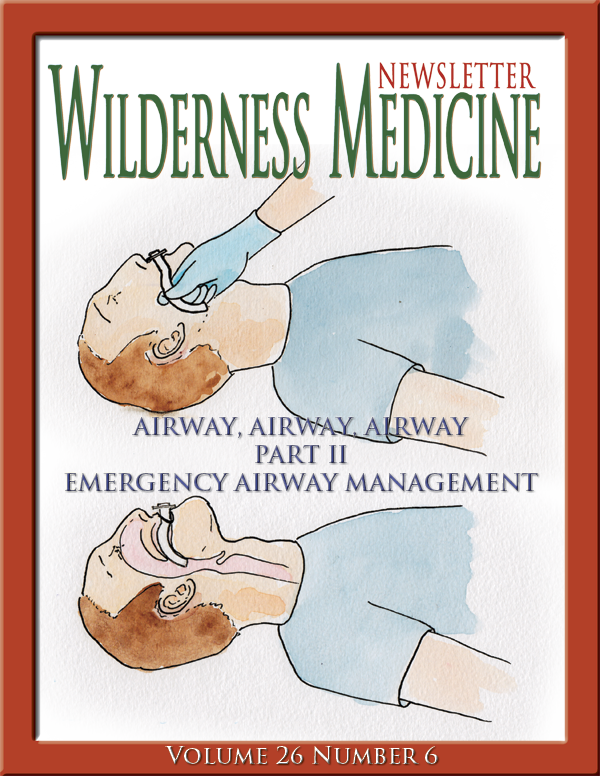AIRWAY PART II: EMERGENCY AIRWAY MANAGEMENT

ISSN-1059-6518
AIRWAY-PART II – EMERGENCY AIRWAY MANAGEMENT
By Frank Hubbell, DO
Illustrations by T.B.R. Walsh
The PURPOSE of Airway Adjuncts:
The purpose of airway adjuncts is to maintain a patent, open airway. This is accomplished primarily by preventing the tongue or other soft tissues from occluding the entrance to the airway at the larynx.
These airway adjuncts are divided into three categories.
1. There are primary airways for immediate support of the airway
2. Intermediate airways designed for longer-term use.
3. Total airway control airways, which require endotracheal intubation that not only maintain an open, patent airway, but also help to prevent aspiration of fluids into the lungs.
REMEMBER: Primary and intermediate airway adjuncts do not necessarily prevent the aspiration of saliva, blood, vomitus, or other fluids from getting into the trachea and lungs.
IMMEDIATE TECHNIQUES for ESTABLISHING and MAINTAINING an OPEN AIRWAY:
PRIMARY AIRWAYS:
The RECOVERY POSITION: 
This is the quickest and simplest way to establish and maintain an open airway in an unconscious patient. You simply have to know how to properly safely logroll someone onto his or her side.



